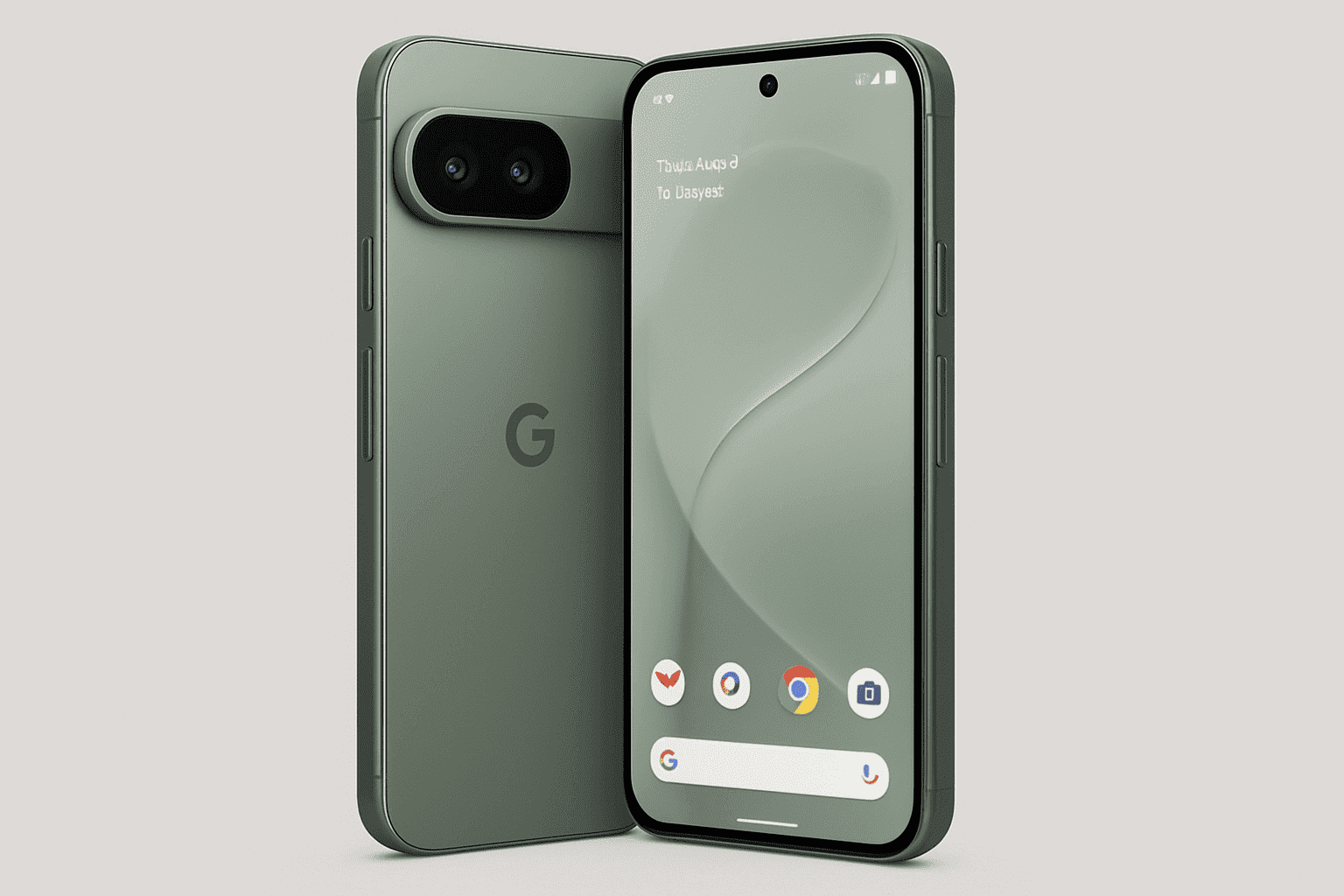Google Pixel 9 First Look: AI-Powered Flagship Unveiled

The Google Pixel 9 has arrived — and it’s more than just another incremental refresh. With Google’s new Tensor G4 chip, advanced on-device AI features like Gemini Live and Pixel Studio, and a major bump to its ultrawide camera sensor, this phone is positioning itself as a serious contender in the flagship space. For smartphone fans, developers and Android loyalists, it matters because Google is pushing the software and hardware integration harder than ever before. The design upgrades and promise of seven years of updates also signal Google’s intent to play long-term. But as always, the real question is: does it deliver enough to face competitors while managing compromises?
Specs & Features
Google has equipped the Pixel 9 with a 6.3″ “Actua” OLED display, boosted brightness (about 35 % brighter than Pixel 8) and a 120 Hz refresh rate.
The core of the device is the Tensor G4 chip paired with 12 GB RAM in the base model.
Storage comes in 128 GB and 256 GB variants. On the camera front, the ultrawide lens jumps from a 12 MP on the previous generation to 48 MP here.
You’ll also find AI-driven features: “Add Me” (insert yourself into group shots), Pixel Studio (image generation) and improved HDR+ pipeline.
Compared to last year’s Pixel 8, key upgrades include improved brightness, larger ultrawide sensor, more aggressive AI features and longer battery life (roughly 20 % better in active usage).
When compared to competitors like the Samsung S24 series or the Apple iPhone 15, the Pixel 9 holds competitive camera specs and software differentiation with Google’s deep AI features.
Design & UX
In terms of design, the Pixel 9 retains the signature camera bar but evolves into a more refined oval “floating” camera housing.
The phone features a silky-matte glass back and polished metal sides, giving it a premium feel.
With flat edges, 6.3″ screen size and a more compact footprint compared to some ultra-large flagships, the Pixel 9 is somewhat more usable one-handed than many rivals. The software side sees Android 15 out of the box (depending on region) with deep AI features baked into the UX: for example, “Call Notes” transcribes and summarises calls on-device.
Overall, the design and user-experience feel polished and consider end-user convenience — gestures, rounded corners, machined edges — but some premium rivals still feel slightly further ahead in materials or luxury finishes.
Performance & Hardware
Performance rests on the Tensor G4 chip built on a 4 nm node (according to sources) which brings improved efficiency and AI processing.
Battery size is about 4,700 mAh according to specs, with fast wired charging (~27 W) and wireless (~15 W) supported.
In real-world use, Google claims about a 20 % longer screen-on time compared to Pixel 8.
The camera hardware is strong: main 50 MP sensor, 48 MP ultrawide, and improved AI-powered imaging features (e.g., Auto Frame, Night Sight in Panorama, etc).
Sound is stereo, durability improved (Gorilla Glass Victus 2 front and back).
On the performance front it’s competitive — though in raw benchmarking some rivals may edge ahead on GPU or thermal architecture. Buyers focused on camera/AI will be well served.
Price & Availability
The Pixel 9 was announced at the Made by Google 2024 event on August 13 2024.
It started at US $799 for the base 12 GB/128 GB model.
In India the launch price was around ₹79,999 for similar, though discounts have emerged.
The phone shipped from August 22 in many markets. Availability across India, US, Europe and select Asian markets was broad, though region-specific colours/storage and carrier tie-ins may vary. Pre-order bundles and trade-in offers also featured.
What’s Missing / Trade-offs
- Charging speed remains modest compared to rivals: many flagship phones now offer 65 W+ wired charging; Pixel 9’s ~27 W is behind.
- While the ultrawide sensor is upgraded, the base model lacks a dedicated telephoto lens (reserved for Pro variants).
- Wireless charging at 15 W is competitive but not top-tier.
- Though Google promises long update support, in some markets third-party accessory ecosystem may lag Samsung or Apple.
- If you prioritise gaming or extreme performance (GPU/thermals), other phones may still be better in those specific niches.
Verdict / First Impressions
The Google Pixel 9 is a strong all-round flagship from Google that excels especially in the camera + AI department. Its refined design, compact size (for a flagship), upgraded ultrawide camera and deep Google-software integration make it a compelling choice for users who prioritise photography, daily usability and smart features over pure benchmarking. That said, if ultra-fast charging or a dedicated telephoto in the base model matter to you, or you demand absolute top-tier performance for gaming, there are better niche options. For most users looking for a future-proof Android flagship with standout photography and AI features, the Pixel 9 is a very good pick.
This launch also signals that Google is serious about offering AI-heavy value and updated hardware in its mainline handset — not just the Pro models.
Wrap-Up
As we move into the rest of 2025, it’s worth watching how the Pixel 9 performs in everyday use — how stable the AI features are, how its camera stacks up in real-world comparisons, and how software updates roll out. Expect follow-up accessories, trade-in deals and possibly regional price drops (already happening in India). Keep an eye on how this phone impacts Google’s broader hardware strategy and how rivals respond.